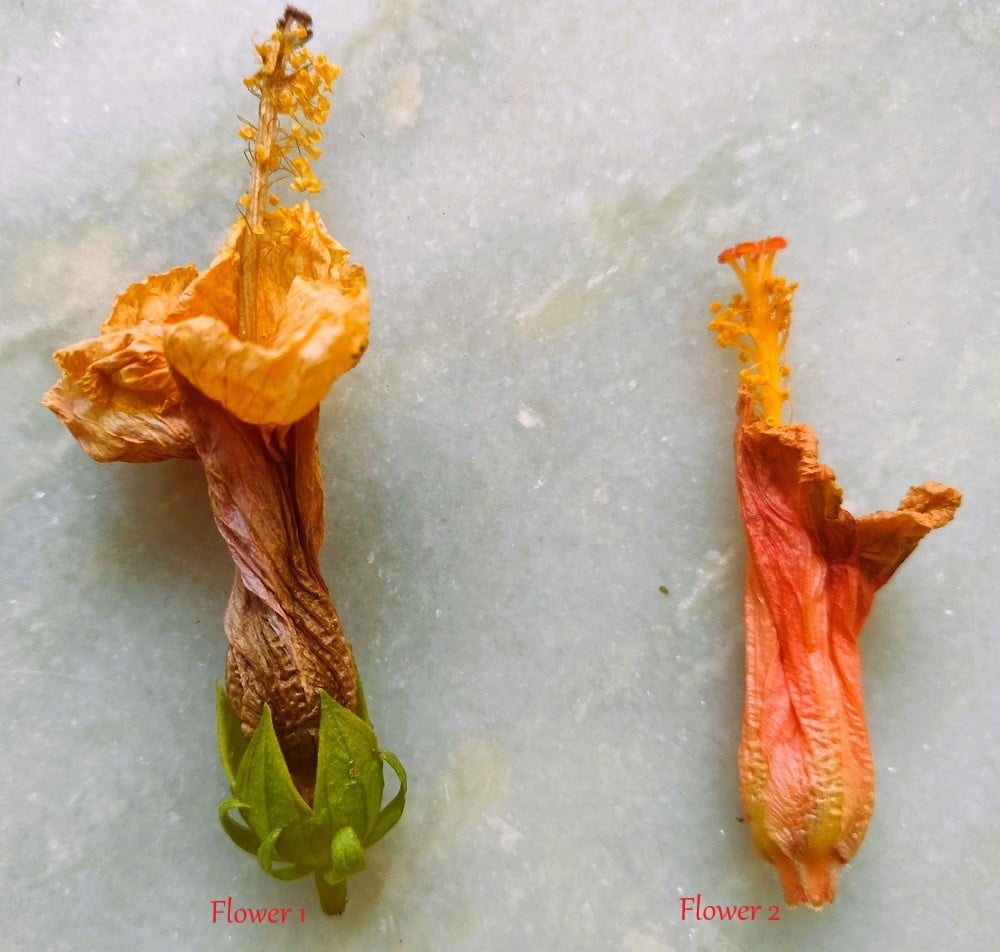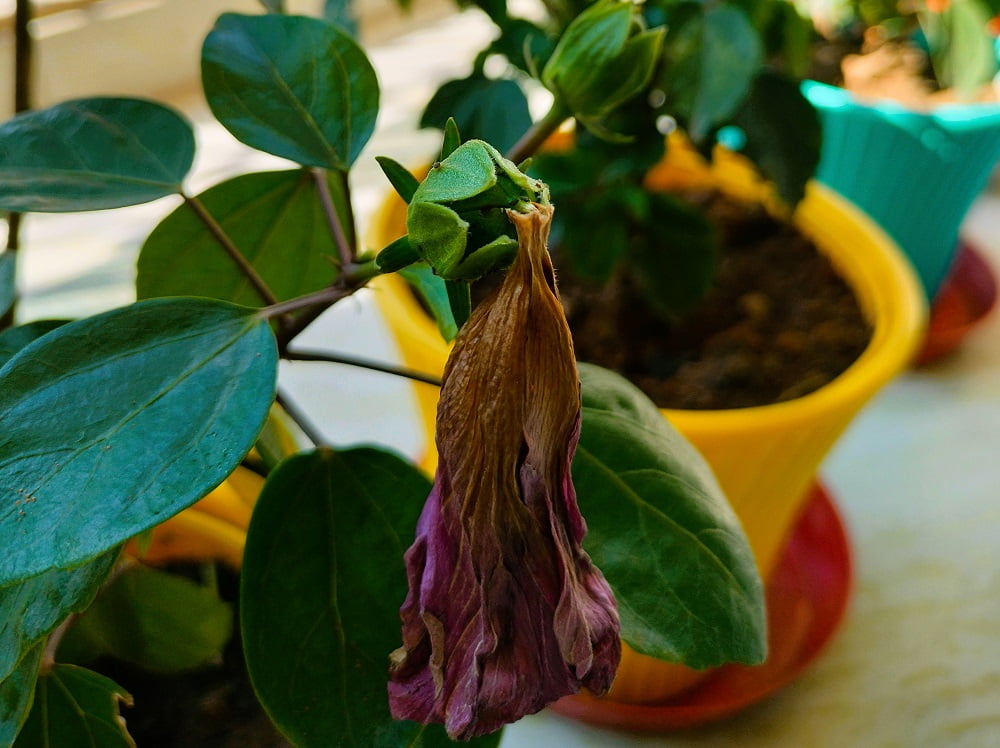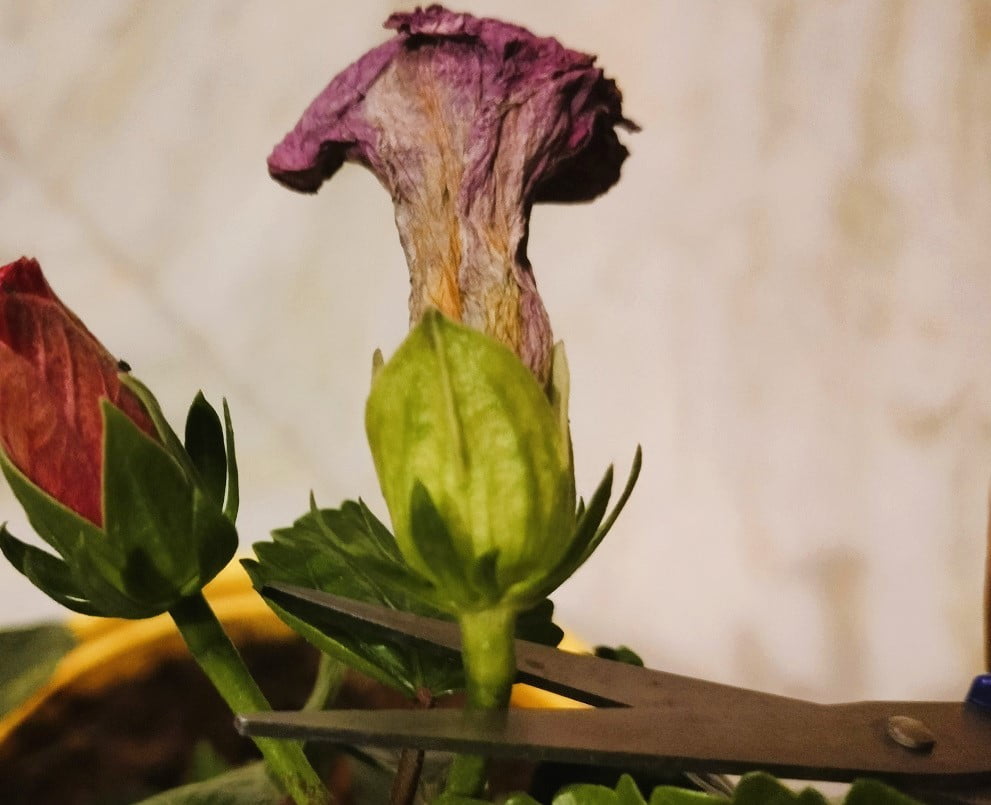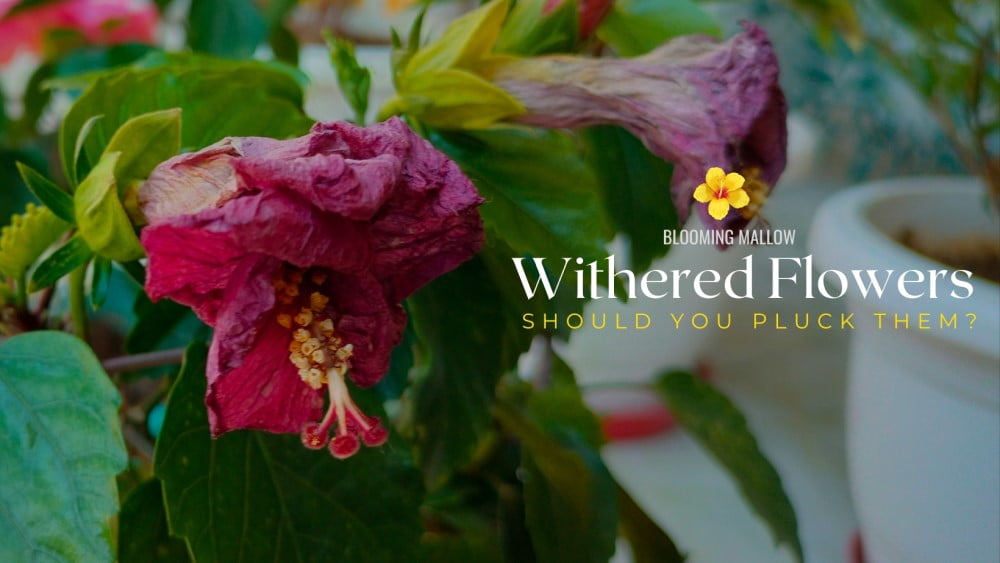
Pinching off wilted dead flowers is a common practice among gardeners. By regularly plucking withered flowers, the plant puts its energy into new blooms or growth rather than into seed production.
Not only that, the plants look much more attractive without wilted flowers hanging over them. But will this practice be effective on hibiscus? Continue reading to get an in-depth insight!
Benefits Of Deadheading Hibiscus
Native to Asia, Hibiscus is becoming increasingly popular due to its mesmerizing blooms. Whether it’s Hibiscus Rosa-Sinensis, Denudatus or Syriacus, these beautiful exotics can be found in many homes and gardens across the United States. Inevitably, blooming leads to wilted and dried flowers. And while wilting is a natural process just like flowering, there are many reasons why gardeners resort to deadheading.
- To Encourage Blooms: Seed pods are formed out of pollinated flowers. This requires a lot of energy, which can be utilized in creation of new flowers.
- To Prevent Mold: Rain and moisture can cause dead flowers to stick to the leaves or healthy buds, which can lead to the formation of mold.
- To Enhance Beauty: The third reason is purely aesthetic, because as a hobby gardener you usually want your hibiscus to be presentable.
Removing dead flowers is done mainly for these three reasons. Long story short, it’s a great way to encourage the plant to focus on new, beautiful blooms while simultaneously avoiding any fungi infestation.
The only question you need to ask yourself is when to do it and when you can avoid.
Should I Cut Off Just The Withered Hibiscus Flower Or Seed Pod As Well?
You can pluck off individual flower heads of hibiscus as soon as they have withered. This will stimulate the plants to keep forming new buds and bloom as profusely as they did when you first brought them home.
Also, the seed pods will only form if the flower remains on the plant for at least a few days after pollination. And without flowers, the hibiscus will not actually be able to produce seeds. So, deadheading stimulates the plant to generate more flowers so as to produce more seeds. This is the very basis for making your hibiscus bloom more profusely.
However, if you want your hibiscus to form seeds and still maintain its beauty by removing wilted flowers. Then you can use these tips to accomplish that.

As you can see in the picture, if the sepal (outer parts of the flower that is green and leaf-like) has lost its color, you can pluck off the entire flower along with the seed pod. On the other hand, if the sepal is still in its original color (dark or light green with no signs of yellow), then it is advised to not pluck it because a seed pod will form underneath.
Once the seed pod has formed, the faded flower hanging from it will fall off by itself or can be removed with a light touch of the hand.

Be careful not to disturb the seed pod in the process. And when it has turned woody brown or pale yellow, you can pluck off the seed pod and save it to grow more of this beautiful flowering plant.
Where Do I Cut When Deadheading Hibiscus?
Deadheading is very simple. As soon as you notice that the entire flower has wilted along with its base, pinch or cut with scissors 0.5 cm below the receptacle, as shown in the image below.

While doing this, always check the base of the flower carefully to be sure that no flower buds are forming amidst the base of the wilted flower.
Did you notice the color of the sepal in the picture? It has turned yellow, which means that it will not form into seed pod.
However, if the sepal still looks healthy and green and you are thinking about saving some of its seeds, let the wilted flower hang in there for a few more days before cutting off the head.
Then again, if you do not plan to store the seeds for propagation, follow the same process of complete deadheading as illustrated in the image.
Why Is It Important To Remove Withered Flowers From Hibiscus?
No doubt withered flowers look unattractive on plants. And if they get damp in the rain or while watering, they can stick to the healthy green leaves or new buds.
Factually, fungal diseases are often caused by leaves that remain wet for an extended period of time. And sometimes these dead flowers can also decay over the leaves and infect the whole branch. They thus pose a danger of fungal infection on your entire plant.
The same goes for petals that fall over the soil and become moldy. Dead flowers over the soil can become a perfect breeding ground for various pests.
One of these pests, thrips, can even lay eggs in hibiscus buds and kill them before they can bloom.
This is why, for the sake of the plant, remove all dead flowers before they stick to the leaves or infest the soil.
Also, if you keep deadheading, the plant will bloom more profusely. The hibiscus then does not put its valuable energy into the formation of seeds. And since it has no offspring in the form of seeds, it will quickly produce new buds to maintain its life cycle. This leads to more blooms!
Why You May Want To Avoid Deadheading Hibiscus?
Be it garden hibiscus or balcony planters, removing wilted hibiscus flowers from them is a tedious task. If you’re wondering if it’s okay to leave them as they are, you’re not the first to think about it.
In fact, you can absolutely do without removing them manually, as wilting of hibiscus flower is a completely natural process. So, by not interfering with the natural life cycle, you allow your hibiscus to produce seed pods that can be used to grow more varieties of this flowering plant.
Here, it is important to pay attention to how many seed pods your hibiscus is producing. If the plant is extremely sterile, it can produce a lot of seed pods. If so, it’s worth cutting off the wilted flowers every few days to encourage flowering and thereby avoiding too many seed pod formation.
If you are not sure or this is your first time, leave the first wilted flowers for a few days and wait. If the plant is sterile or has been pollinated, it will certainly produce seed pods, which will be clearly visible in the form of a bulge. Unlike the buds, these seed pods are twice as large and therefore easy to distinguish.
My Personal Opinion: Should You Deadhead Or Not?
For a gardener, there is nothing more rewarding than witnessing his garden come to life with beautiful blooms. Which is why it can be difficult to decide whether to discard dead blooms as it encourages flowering, but detrimental in case you wish to propagate.
I personally avoid deadheading hibiscus flowers as it is quite a tedious task. If you have 1 or 2 planters, it’s understandable, but if you have more (say 20), it’s a big commitment! But I do pick up the flowers that have fallen to the ground or are stuck to the leaves so as to prevent any kind of mold infestation.
And as far as flowering is concerned, I have not observed any difference in the number of blooms since weekly dose of fertilization keeps the nutrition level in check.
Besides, all varieties of hibiscus are self-cleaning, in other words, they simply discard their withered flowers, and then constantly form new buds. Gardeners should therefore assess their specific requirements in order to make a decision.
So, if you’re still thinking about whether or not to do it, it’s best to take a somewhat nuanced approach. Simply put, do it, but not often. As the saying goes, “Nature knows best”.
Before I wrap up, you might want to know if it’s okay to remove yellow leaves from your hibiscus plant just like spent flowers . The answer is yes! To know how – just click on the link above.
Have fun gardening!




